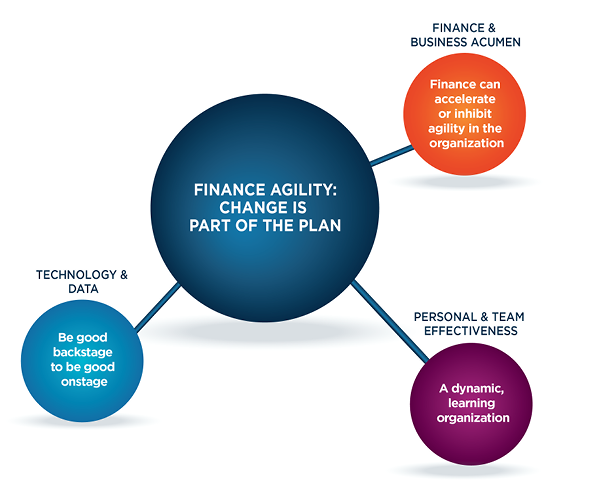staging Continuously evolving, AFP's collection of publications reflects the ever-changing treasury and finance environment. Gain insight, knowledge and action plans for success on a wide range of topics impacting your daily working responsibilities.
AFP FP&A Guide: Finance Agility: Change is Part of the Plan
Underwritten by Workday

Finance’s reaction to a disruptive world is to incorporate agility into its processes
Change and disruption are inevitable, and to tackle them, finance must intentionally build agile practices into their work. To help you navigate this path, our guide outlines three key areas to focus on for pursuing agility. Put these ideas into practice and develop a strong, resilient organization that can achieve its goals even in the face of challenge.
Download the 2023 AFP FP&A Guide: Finance Agility: Change is Part of the Plan, underwritten by Workday, and discover how finance can:
- Accelerate or Inhibit Agility in the Organization
- Become a Dynamic, Learning Organization
- Be Good Backstage to Be Good Onstage

WHY AGILITY MATTERS
The term Agility implies a mindset open to change, the ability to rapidly assess the environment and the capability for action that effects change. The importance of agility is often seen in adapting capabilities of working toward goals. Over time, agile companies outperform because they have a better capability to change internally in a world that is in a constant state of flux.
Learn more about the powers of agility.FINANCE CAN ACCELERATE OR INHIBIT AGILITY IN THE ORGANIZATION
Finance owns the fiscal calendar with its agenda and rhythms and wields massive influence in defining:
- How people spend their time in the planning cycles
- Metrics of success
- Depth of analysis into the business and related conversations
- Level of risk the organization is willing to take
This goes far beyond just delivering the numbers, so FP&A must consider whether its processes and performance management systems add to agility or detract from it, learn more.
BECOME A DYNAMIC, LEARNING ORGANIZATION
Anti-agile traits include staff mistrust, turnover and unengaged employees who simply follow routines. FP&A needs to define and create the agile culture it wants that is open to challenge. These steps can help:
- Develop psychological safety on the team
- Develop good leaders
- Engender a team ethos of continual improvement
BE GOOD BACKSTAGE TO BE GOOD ONSTAGE
Being agile and able to handle the unpredictable requires that you handle routine work. FP&A’s ability to deliver its services and insights on stage to business customers requires:
- A reliable, scalable infrastructure operating backstage
- A platform that allows FP&A to accomplish the work
- Access to good data with minimal curation

